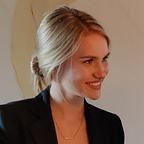The responsibilities of a UX Designer
The environment is changing. Technology is changing. People’s needs are changing. As a UX Designer, I am part of this change.
You might have seen the Netflix documentary The Social Dilemma from Exposure Labs, the team behind Chasing Ice and Chasing Coral. If not, I deeply encourage you to do so. This documentary brings attention to the individual and societal impact of algorithms, which are optimized to extract attention and influence behavior. It is showing interviews with the tech leaders who built these algorithms. Demonstrating their impact on the lives and drawing a clear line between the economics of the tech industry and tremendous impacts ranging from mental health to COVID-19 misinformation.
Gladly, society’s awareness is enhancing. But the hard truth is, these algorithms were made by humans. Deliberately designing persuasive technology systems. There are teams behind, that carefully decided on these designs. And within those teams — UX Designers.
And this is the reason why I write this article as my manifesto. There are huge differences in the believes and principles of UX Designers among developing successful future experiences. Shifting from immoral to ethical.
UX Designers are working at the intersection of continuously understanding and representing the users’ needs, bringing value to the business ecosystems, and enhancing technological transformation. The Venn Diagram of UX from the Interaction Design Foundation is manifesting these relations, but to truly realigned it with humanity’s best interests the original formula has to take ethics into account.
In my interpretation of the Venn Diagram there should always be the following questions asked within working on a UX process: Just because we can, should we? Does it truly achieve the outcomes we need to see?
Being critical towards ethical values can be a unique trait for your work in the future. Doing things better than using persuasive technique — for the user, the ecosystem and an ethical transformation of technology.
“The goal should be to shift the mindset from which persuasive technology systems are built, and to use that process to support crucial parallel shifts in our larger economic and social systems.” — Center for Humane Technology
As a UX Designer — I am part of this shift. Every product I design, every team I contribute to, every company I work for: The foremost of all UX design principles is to focus on the users throughout the design process. It is my responsibility to amplify the best of humanity and the best of technology — putting the user always first.
Additional to align my work to the Nielsens Heuristics from the NN Group the design principles below are my guidelines and design considerations that underline the responsibilities of my work as a UX Designer.
Bottom line: Unethical products will always existist and be developed in the future. It is up to you: Do you want to contribute to those or enhance an ethical transformation of technology? To all UX Designers — I challenge you to create experiences that combine the best of humanity and technology.
